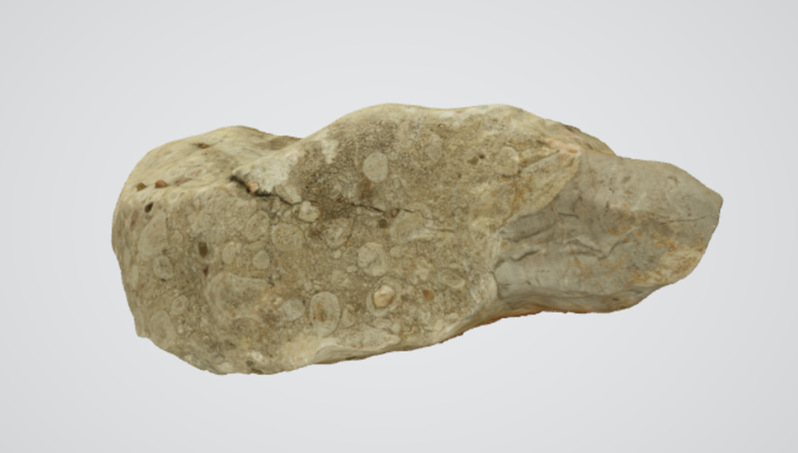
湖相灰岩(Lacustrine limestone)
产地:山东省平邑县
特征:
几乎由纯的方解石构成,其它成分的总含量常在5%以下,其中较为常见的是粘土矿物、石英粉砂、铁质微粒、海绿石、有机质等。在与砂岩过渡的灰岩中可含较多陆源碎屑,白云石化也可使白云石含量增加。石灰岩的主要成分是碳酸钙,可以溶解在含有二氧化碳的水中。一般情况下一升含二氧化碳的水,可溶解大约50毫克的碳酸钙。
石灰岩的主要成分是碳酸钙,可以溶解在含有二氧化碳的水中。一般情况下一升含二氧化碳的水,可溶解大约50毫克的碳酸钙。湖中所沉积的碳酸钙,在失去水分以后,紧压胶结起来而形成的岩石,称为石灰岩。石灰岩的矿物成分主要是方解石(占50%以上)还有一些粘土、粉砂等杂质。绝大多数石灰岩的形成与生物作用有关,生物遗体堆积而成的石灰岩有珊瑚石灰岩、介壳石灰岩,藻类石灰岩等,总称生物石灰岩。由水溶液中的碳酸钙(CaCO3)经化学沉淀而成的石灰岩,称为化学石灰岩。如普通石灰岩、硅质石灰岩等。
采集人:马玉新
Lacustrine limestone
Provenance: Pingyi, Shandong, China
characteristics:
Limestone is a sedimentary rock composed largely of the minerals calcite and aragonite, which are different crystal forms of calcium carbonate (CaCO3). Most limestone is composed of skeletal fragments of marine organisms such as coral, forams and molluscs.
Limestone makes up about 10% of the total volume of all sedimentary rocks. The solubility of limestone in water and weak acid solutions leads to karst landscapes, in which water erodes the limestone over thousands to millions of years. Most cave systems are through limestone bedrock.
Limestone has numerous uses: as a building material, as aggregate for the base of roads, as white pigment or filler in products such as toothpaste or paints, and as a chemical feedstock for the production of lime.
The first geologist to distinguish limestone from dolomite was Belsazar Hacquet in 1778.
Gatherer: Ma Yuxin